
Managing time doesn’t have to feel like juggling chaos. Many high-achievers swear by a simple tool — the daily to-do list. Whether you’re balancing work, personal goals, or creative projects, mastering your list can be life-changing. Let’s explore how the most successful people plan their days to manage time effortlessly and effectively.
Introduction
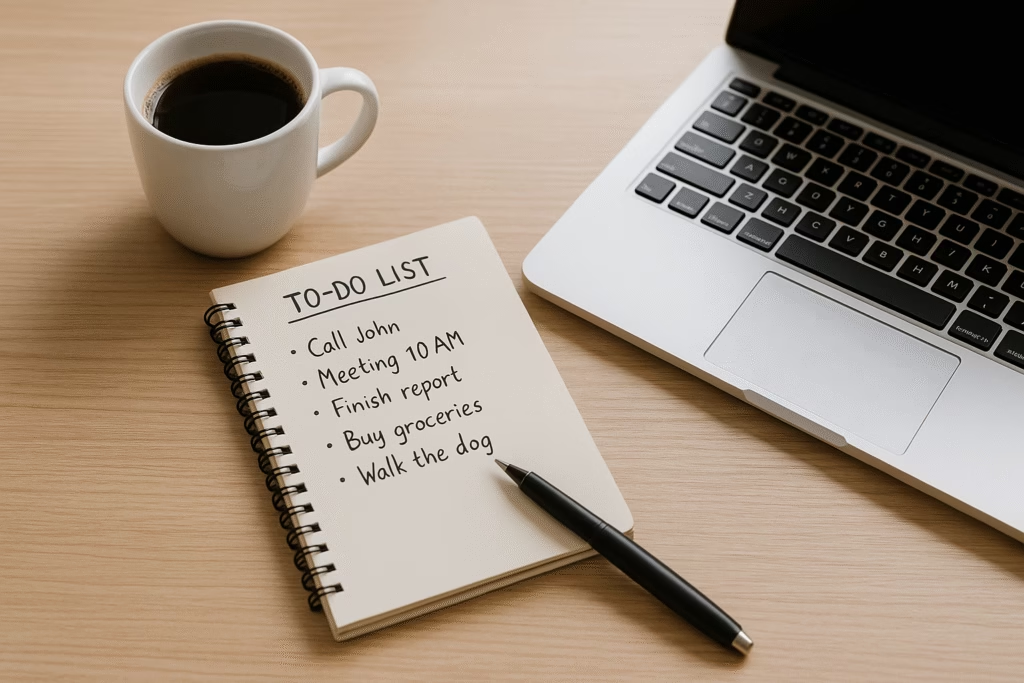
Time management is one of the most valuable skills in the modern world. We live in an age of endless distractions — notifications, emails, meetings, and mental clutter — all competing for our attention. The difference between feeling productive and feeling overwhelmed often comes down to how well you manage time. For many of the world’s most successful people, the secret weapon is surprisingly simple: a well-structured to-do list.
Think about it — some of the busiest people on the planet, from entrepreneurs and CEOs to creators and parents, all rely on the same fundamental principle. They write things down. And plan. They prioritize. While apps and productivity tools come and go, the classic daily to-do list remains one of the most effective ways to manage time and keep chaos under control. It’s not just about staying organized; it’s about designing each day with purpose.
At its core, a to-do list is more than a record of things to do — it’s a reflection of how you value your time. When you write down what matters most, you’re making a conscious choice about how your day unfolds. You’re telling your brain, “This is what’s important.” That clarity helps you focus on actions that truly move the needle instead of getting lost in low-impact busyness. Successful people understand that time is finite, and a list gives structure to how they use it.
Research backs this up. Psychologists have found that people who externalize their goals — meaning they write them down — experience less mental fatigue and perform tasks more efficiently. It’s a cognitive relief: you no longer have to hold every reminder in your head. Instead, you can direct that energy toward meaningful work. This simple act of planning allows you to manage time with greater precision, creativity, and calm.
Most importantly, using to-do lists isn’t about perfection. It’s about progress. Even the most disciplined professionals don’t complete every single task each day — and that’s okay. What matters is the intention behind the list. When you develop a daily habit of listing and prioritizing, you gain control over your schedule, focus your attention, and make room for what truly counts. In the sections that follow, we’ll explore how successful people structure their lists, why they’re so effective, and how you can build a system that helps you manage time like never before.
Why To-Do Lists Work

The to-do list works because it transforms abstract intentions into concrete, visible actions. When you write something down, you’re signaling to your brain that it matters. It creates clarity, reduces cognitive overload, and lets you focus on completing one task at a time.
Science supports this. Studies show that people who write down their goals are 42% more likely to achieve them. This is partly because lists provide a dopamine boost — each time you check something off, your brain rewards you, reinforcing motivation.
How Successful People Structure Their To-Do Lists
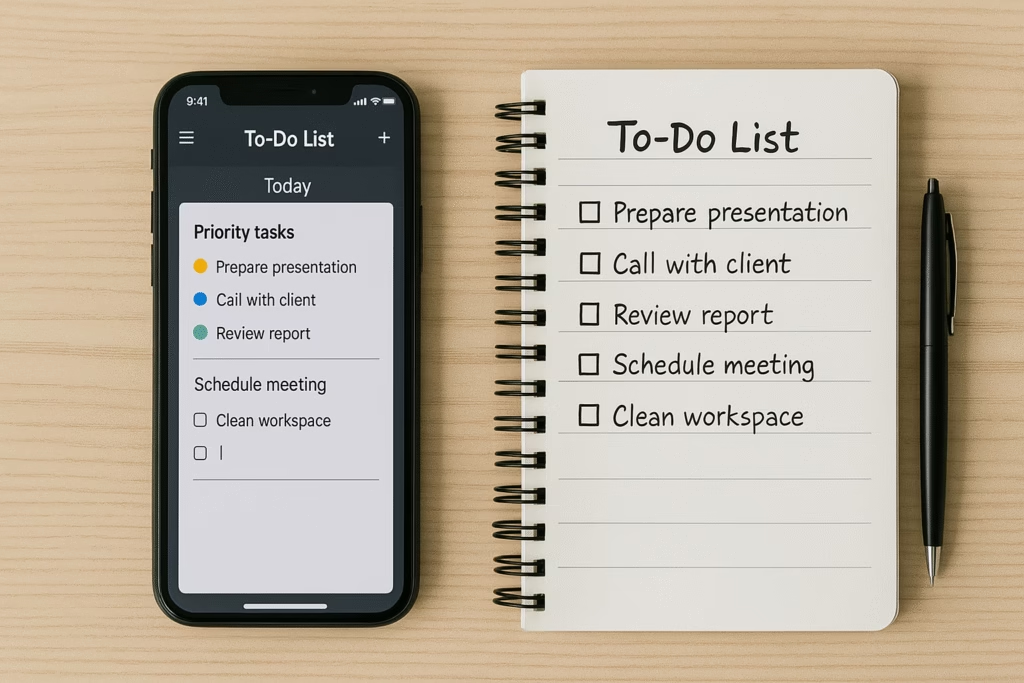
Let’s look at how top performers create and use their lists differently from the average person.
1. They Prioritize, Don’t Just List
Successful people don’t just jot down everything they need to do. They prioritize. For example, Warren Buffett uses a simple rule: write down your top 25 goals, circle the five most important, and focus on those until completion.
How to do it:
- Start your day by listing everything you think you need to do.
- Then highlight your top 3 “must-do” tasks — the ones that move you closer to your biggest goals.
- Treat these as non-negotiables for the day.
2. They Use Time Blocking
Elon Musk is famous for scheduling his day in 5-minute increments. While that may sound extreme, the principle behind it — time blocking — is powerful. It ensures that each task has a designated time slot, reducing decision fatigue.
How to do it:
- Use a planner or digital calendar.
- Assign blocks of time for specific types of work (e.g., deep work, meetings, creative time).
- Respect these boundaries as if they were appointments.
3. They Combine Digital and Paper Tools

Many successful people use a hybrid system — paper lists for focus, digital tools for organization.
For instance, Richard Branson prefers jotting notes in notebooks, while Tim Ferriss uses digital systems like Todoist and Notion to track habits and projects.
How to do it:
- Use a paper list for your daily top 3 tasks.
- Keep longer-term goals or project lists in digital apps like Asana, Trello, or Notion.
- Sync your tools weekly to stay aligned.
4. They Batch Similar Tasks
Batching — doing similar tasks together — minimizes context switching. Successful people know that jumping between unrelated tasks destroys focus.
How to do it:
- Group emails, calls, or admin work into one or two blocks.
- Reserve mornings for creative or high-priority work.
- Use the Pomodoro technique (25-minute focus sessions) to maintain energy and flow.
5. They Reflect Daily

Reflection is the secret weapon of consistent performers. By reviewing what worked and what didn’t, they continuously refine their systems.
How to do it:
- At the end of the day, spend 5 minutes reviewing your list.
- Ask yourself: What did I accomplish? What got delayed? Why?
- Use this insight to adjust your priorities for tomorrow.
The Psychology Behind To-Do Lists

There’s more to lists than just organization — they tap into human psychology. When you complete a task, your brain releases dopamine, which makes you feel good and encourages repetition. That’s why checking boxes feels so satisfying.
Additionally, lists reduce anxiety. When tasks live only in your head, they feel endless and overwhelming. Writing them down provides closure — a defined plan of attack.
This is why even the busiest people, from presidents to entrepreneurs, swear by this simple system to manage time efficiently.
Common Mistakes People Make with To-Do Lists

Even though to-do lists are simple, most people use them ineffectively. Here’s what to avoid:
- Overloading the list – Trying to do 20 things in one day only leads to burnout.
- Vague tasks – “Work on project” is unclear; “Finish section 2 of report” is actionable.
- No prioritization – If everything is urgent, nothing gets done.
- No review – Without reflection, you repeat the same inefficiencies.
How to Create a To-Do List That Works for You
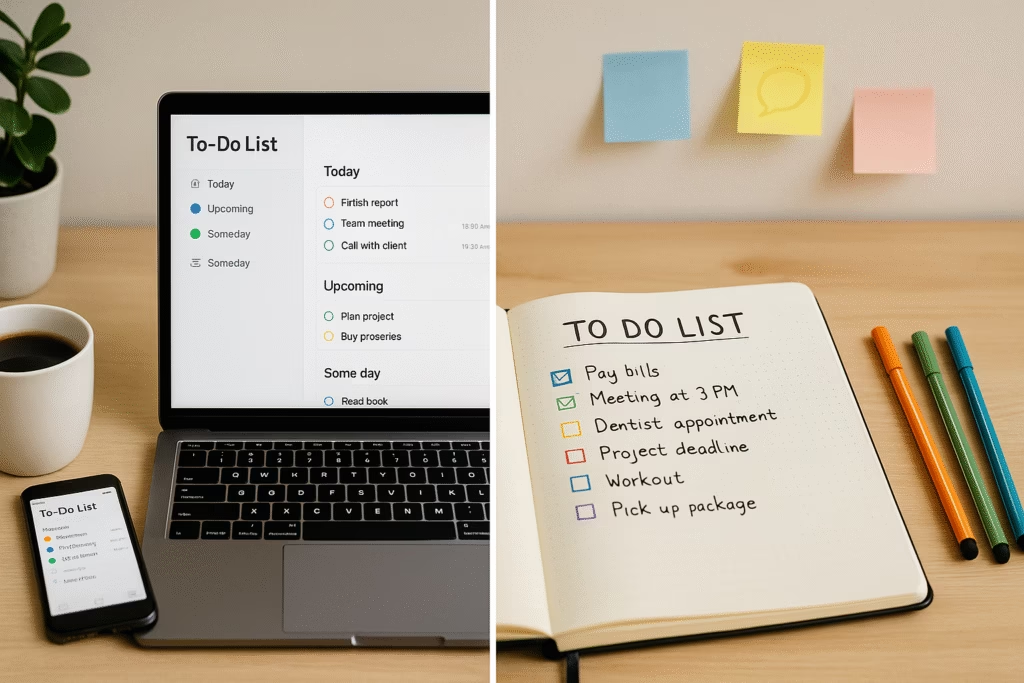
Step 1: Start Small
Begin with 5–7 tasks per day. Over time, you’ll refine how much you can realistically handle.
Step 2: Use the “MIT” Rule
MIT stands for Most Important Tasks. Identify the top 3 tasks that must get done. These should align with your main goals, not just urgent distractions.
Step 3: Add Time Estimates
Assign a time duration to each task (e.g., “Write report – 1 hour”). This prevents underestimating effort and helps you manage time more effectively.
Step 4: Keep It Visible
Your to-do list should always be in sight — whether it’s on your desk, phone, or desktop widget.
Step 5: Celebrate Small Wins
Each checkmark is progress. Reward yourself after completing your top 3 tasks — it reinforces the habit loop.
Real-Life Examples of To-Do List Systems
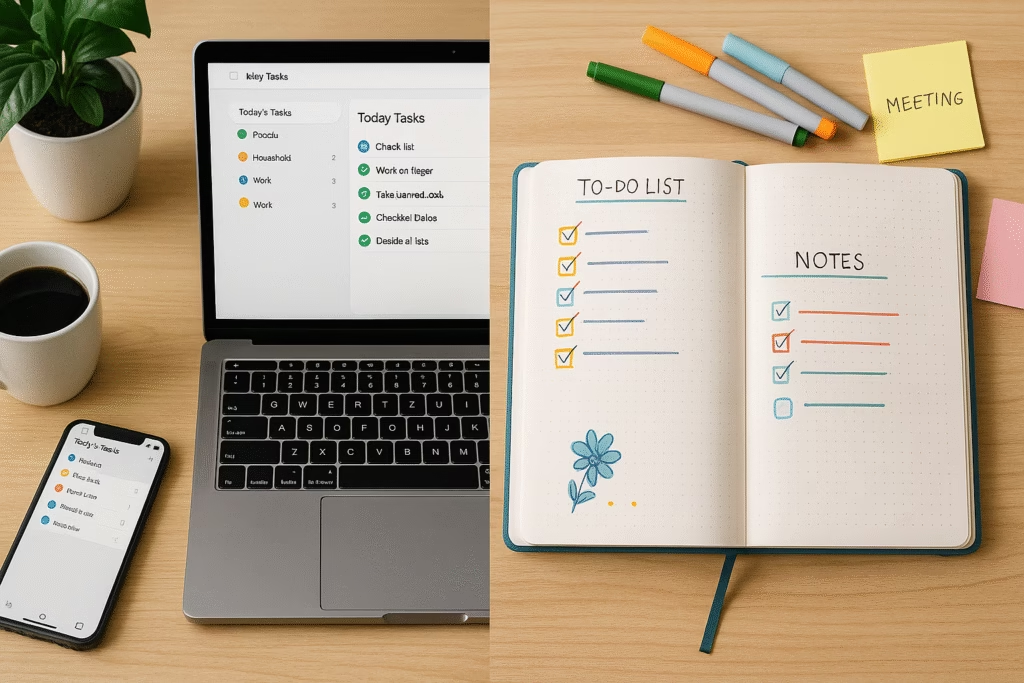
Bill Gates: Uses detailed digital planning for long-term goals and short daily priorities.
- Marie Forleo: Breaks her tasks into themed days (e.g., “Content Mondays,” “Creative Fridays”).
- Oprah Winfrey: Combines journaling with task lists to stay intentional.
- Mark Zuckerberg: Uses minimalist lists — focusing only on what truly matters each day.
Each of these approaches highlights the same truth: the system matters less than consistency.
Benefits of Using Daily To-Do Lists
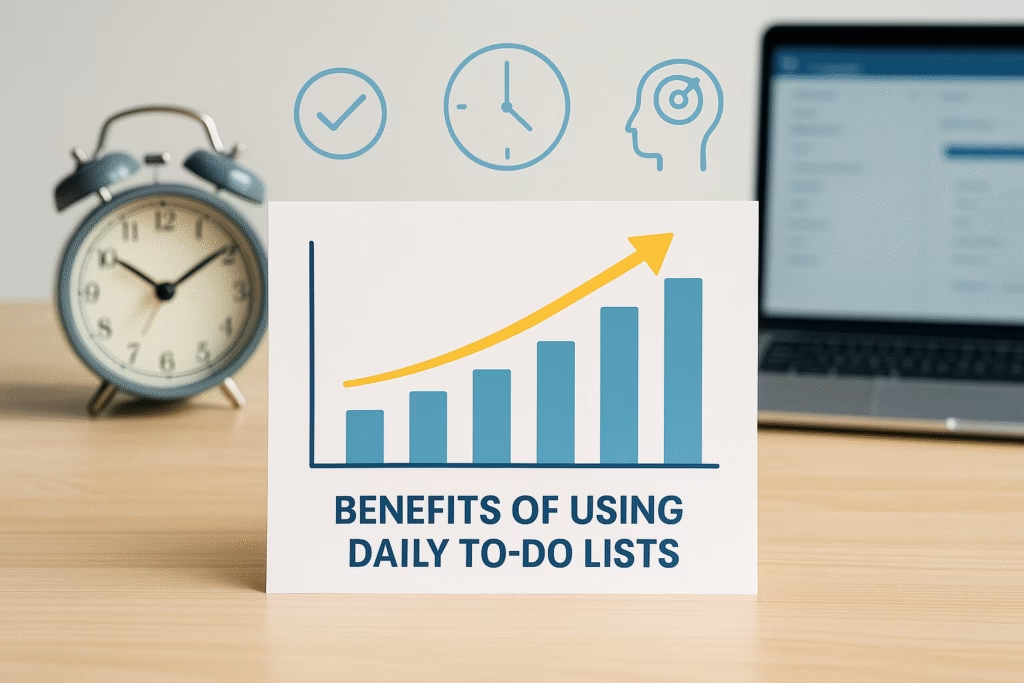
Improved Focus: You waste less time deciding what to do next.
- Reduced Stress: Writing tasks down offloads mental pressure.
- Increased Accountability: Seeing unfinished tasks creates gentle motivation.
- Better Work-Life Balance: You plan time for rest as intentionally as work.
- Enhanced Motivation: Every checkmark fuels your sense of achievement.
FAQs

1. How many tasks should I include on a daily to-do list?
Aim for 5–7 realistic tasks per day, with 3 key priorities. More than that leads to overwhelm.
2. Should I use paper or digital lists?
It depends on your style. Paper helps focus, while digital tools help organize complex projects. Many successful people combine both.
3. What if I don’t finish everything?
That’s okay. Move incomplete tasks to tomorrow — but reassess why they weren’t completed to improve planning accuracy.
4. When is the best time to make a to-do list?
Evenings are ideal. Planning tomorrow today helps you start the next morning with clarity.
5. How can I stay consistent with my list?
Keep it simple, visible, and rewarding. Build the habit by celebrating progress daily.
Final Thoughts
Success isn’t about being busy; it’s about being intentional. A well-crafted to-do list turns your day from scattered to strategic. When used consistently, it helps you manage time, focus on what matters most, and achieve results without burnout.
Start today. Write your list, choose your top three tasks, and take that first small step. Your future productivity will thank you.
References
- PsychNet – Willpower: Rediscovering the greatest human strength.
- Harvard Business Review – How to Keep Working When You’re Just Not Feeling It
- Psychology Today – Do To-Do Lists Work?
Recent Posts


